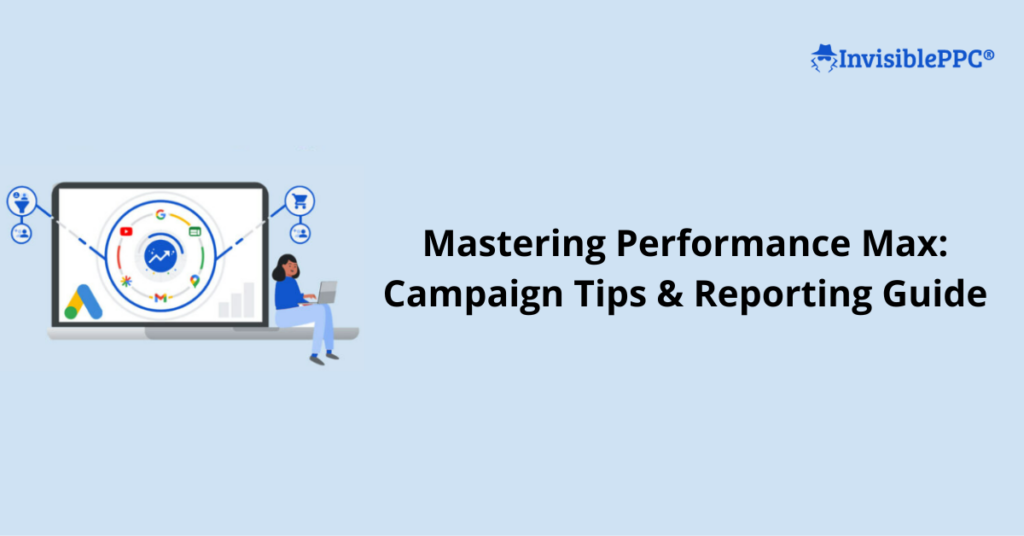How to Create Performance Max Campaigns?
1. Sign in to Google Ads: Start by logging into your Google Ads account
2. Navigate to Campaigns: From the page menu on the left, click on ‘Campaigns’, then click on the plus button and select ‘New Campaign’.
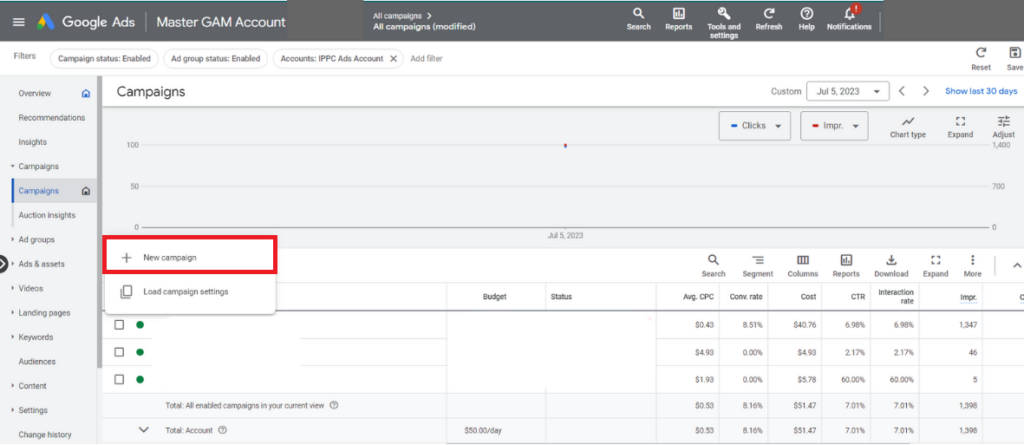
Image Source- InvisiblePPC, July 2023
3. Choose Your Campaign Goal: Depending on your business objectives, select a relevant goal for your campaign. If none of the goal options align with your objective, select ‘Create a campaign without a goal’s guidance.’
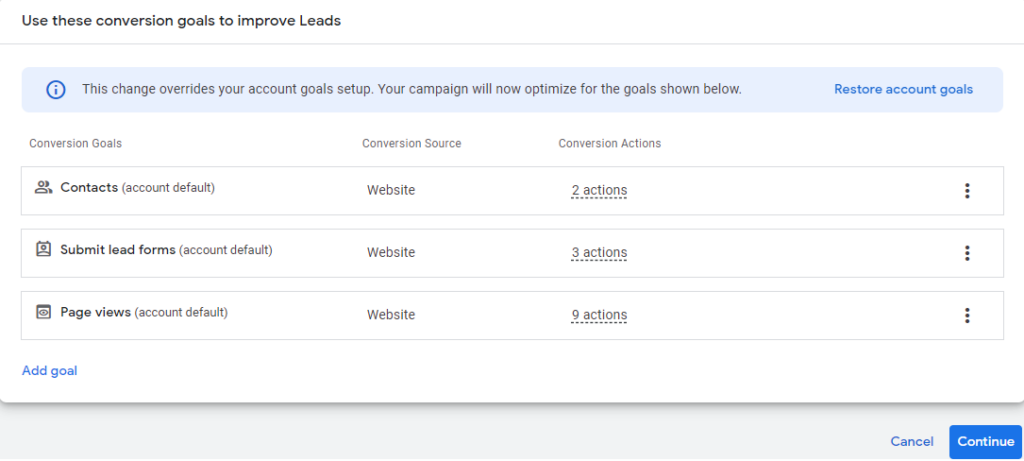
Image Source- InvisiblePPC, July 2023
4. Select the Campaign Type: Choose ‘Performance Max’ as your campaign type.
Image
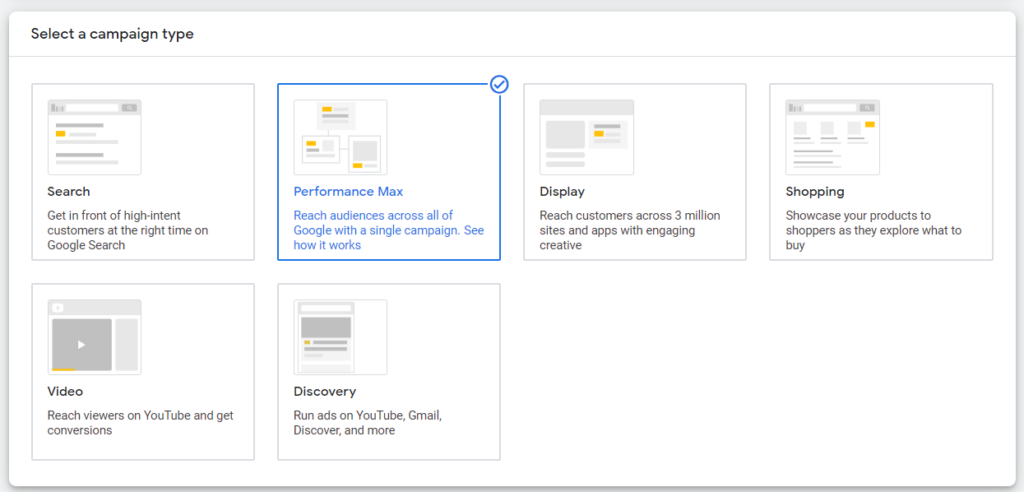
Image Source- InvisiblePPC, July 2023
5. Choose Your Settings: Now, you’ll need to set your campaign parameters, such as languages, locations, budget, and bidding.
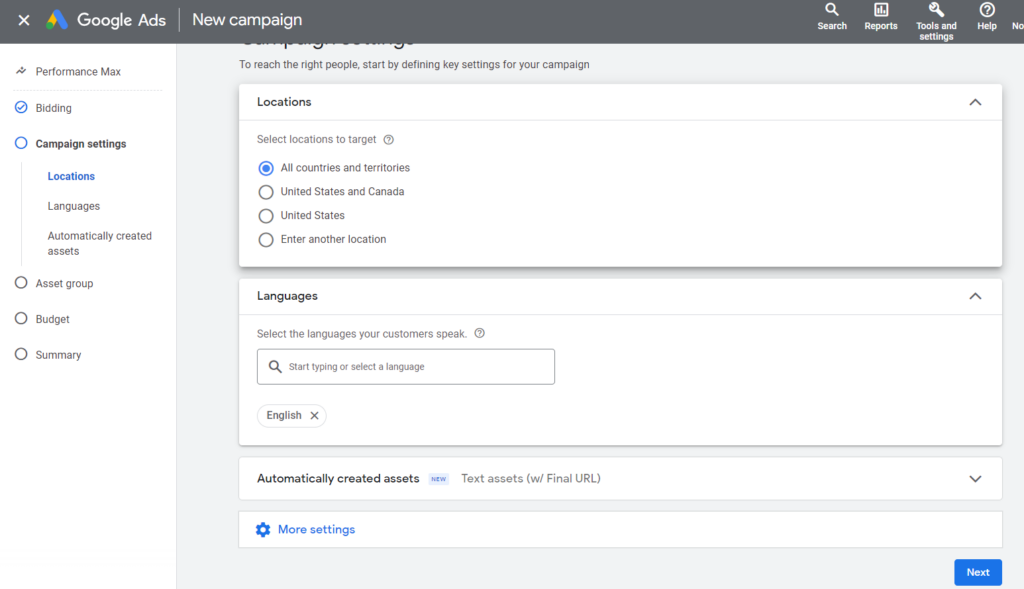
Image Source- InvisiblePPC, July 2023
6. Create Your Ad: Finally, create your ad content. Remember, PMax uses responsive ads, so you’ll need to provide several headlines, descriptions, and images.
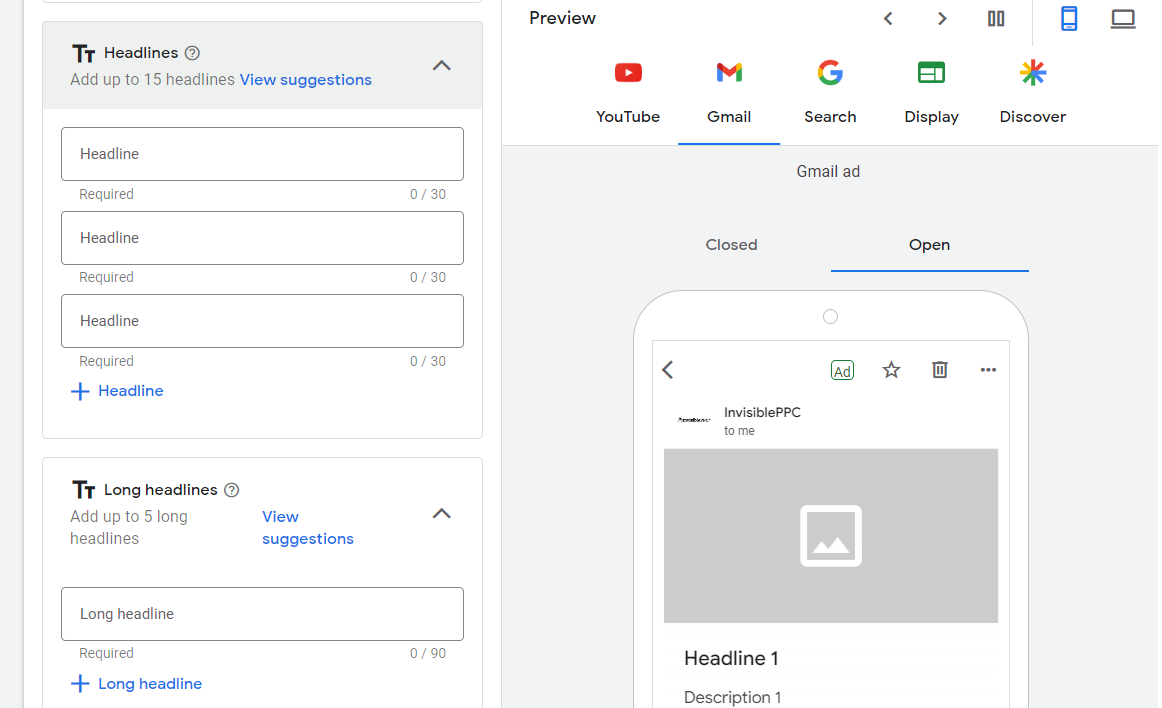
Image Source- InvisiblePPC, July 2023
7. Launch Your Campaign: Review your settings and if everything looks good, click ‘Save and continue’ to Publish your campaign.
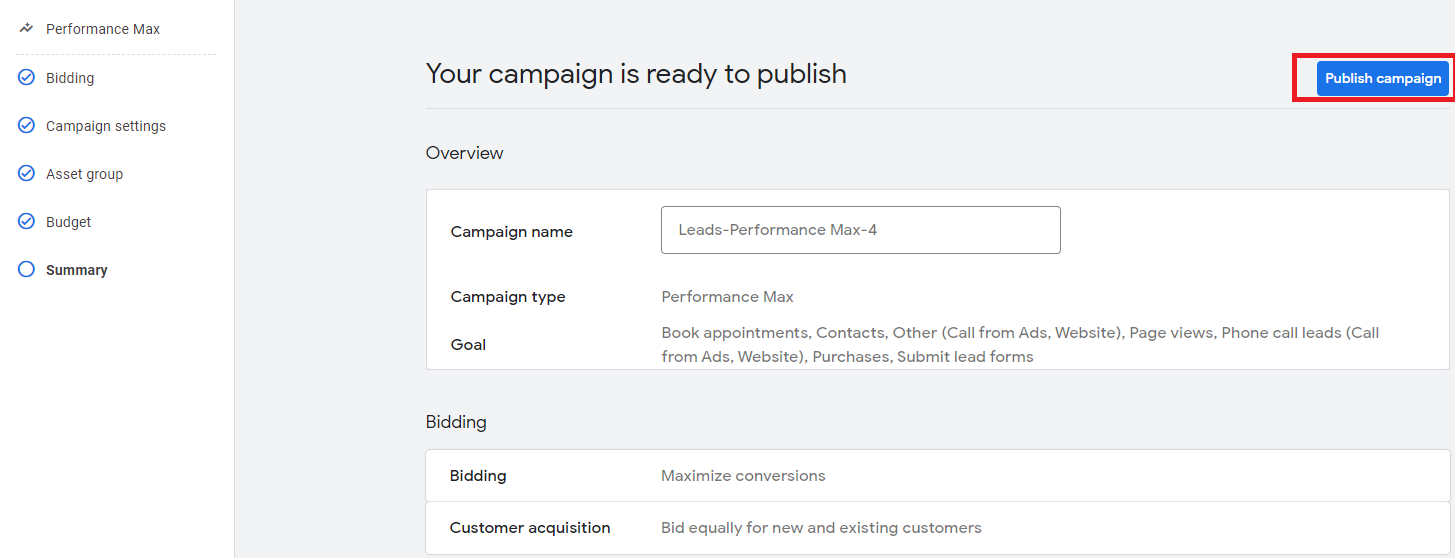
Image Source- InvisiblePPC, July 2023
Performance Max Campaigns: Top 7 Tips
1. Opting Out of Automated Videos
Google’s Performance Max (PMax) campaigns utilize automated videos to enhance user engagement and campaign performance. But hey, we get it, not every business’s marketing strategy or branding aesthetics.
To cater to this, Google provides the option to opt out & this happens at the account level and affects all your PMax campaigns.
This flexibility enables advertisers to tailor their campaigns more closely to their specific marketing objectives, ensuring their brand’s consistency and focus on their chosen strategies.
Keep in mind, though, opt-out requests can be raised by your account managers only. It’s up to your account manager to get the ball rolling with Google’s team.
You can learn more about this process in this Google guide here. In short, while automated videos can enhance campaigns, they’re not always the right fit, making the opt-out option a handy tool for PMax customization.
3. Budgeting
When it comes to budgeting for your PMax campaign, there’s no one-size-fits-all figure. The most effective budget is one that aligns with your specific business and campaign goals.
A good rule of thumb as suggested in Google Guide is to set your average daily budget at least 3 times your Cost Per Acquisition (CPA) or cost per conversion for the selected conversion actions in your campaign.
But why this multiple? It’s designed to ensure your campaign has enough financial leverage to produce meaningful results and match the performance of other successful campaigns in your account.
However, as pointed out by Store Growers, this might be on the higher side for smaller advertisers. For those, a more manageable rule of thumb may be to have at least 1x CPA as the daily budget. So, if your usual cost per conversion is $58, a budget of at least $58/day could be a more feasible starting point.
It’s critical to understand that a budget too low relative to the CPA could lead to a slower ramp-up period or fewer conversions over several days. So, while there’s no fixed figure that fits all, ensuring your budget is in sync with your CPA targets can put you on the path to better results.
Remember, no matter your starting point, your budget should always be evaluated and adjusted based on your campaign’s performance and your business’s evolving needs.
4. Bidding Strategy for New and Existing Customers
When initiating a Performance Max (PMax) campaign, adopting a balanced strategy that targets both new and existing customers can maximize your audience reach and engagement.
Google Ads’ New Customer Acquisition goal allows you to optimize the campaign to either bid higher for new customers or exclusively for them, a feature available in both PMax and Search campaigns.
There are two modes for customer acquisition: New Customer Value mode adds extra value for a new customer’s first purchase conversion, maximizing revenue across all customers, and New Customer Only mode, limiting ads to new customers, suitable for acquisition-focused budgets or non-purchase conversion campaigns.
Note, an exclusive focus on new customers might need a longer optimization period and may not produce optimal results, hence a balanced bidding approach is often the ideal starting point.

Image Source: Wordsteam
5. Selecting the Product Feed
Integrating a product feed into your PMax campaign can significantly ramp up its impact. By providing Google with extra data through the product feed, your ads gain more precision in their display, potentially driving your campaign performance higher.
Moreover, the algorithm incorporates headlines from your product feed alongside your ad copies. This fusion of information enhances your ads’ relevance, presenting more opportunities to boost your click-through rate (CTR).
6. Handling Brand Search Campaigns
When initiating a Performance Max (PMax) campaign, adopting a balanced strategy that targets both new and existing customers can maximize your audience reach and engagement.
Google Ads’ New Customer Acquisition goal allows you to optimize the campaign to either bid higher for new customers or exclusively for them, a feature available in both PMax and Search campaigns.
There are two modes for customer acquisition: New Customer Value mode adds extra value for a new customer’s first purchase conversion, maximizing revenue across all customers, and New Customer Only mode, limiting ads to new customers, suitable for acquisition-focused budgets or non-purchase conversion campaigns.
Note, an exclusive focus on new customers might need a longer optimization period and may not produce optimal results, hence a balanced bidding approach is often the ideal starting point.
Creating Reports for PMax Campaigns
The ability to measure the success of your campaigns is critical, and Google Ads makes it relatively straightforward to create reports for your Performance Max (PMax) campaigns.
With PMax campaigns running across various networks (Search, Display, YouTube, Discover, and more), you get a wealth of data. Google Ads’ reporting tools allow you to tap into this data to understand your campaign’s performance across these different networks. These reports offer valuable insights into metrics like click-through rates, conversion rates, cost per click, and more, all of which are vital for evaluating your campaign’s effectiveness and identifying areas for improvement.
However, creating these reports isn’t just about clicking a few buttons; it requires a strategic approach to ensure you’re tracking the right metrics for your specific goals. To navigate this process, Google’s step-by-step Guide on setting up reporting for PMax campaigns will walk you through the process, showing you how to tailor your reports to your unique needs and goals.
Remember, creating and reviewing these reports should be an ongoing process. By consistently monitoring and analyzing your campaign’s performance, you can make informed decisions, adjust your strategy as needed, and ultimately drive better results from your PMax campaigns.
Ending Note
In summary, optimizing and understanding the performance of your PMax campaigns can significantly impact their success. By implementing the tips above and using the reporting tools provided, you can make the most of this powerful Google Ads feature.

